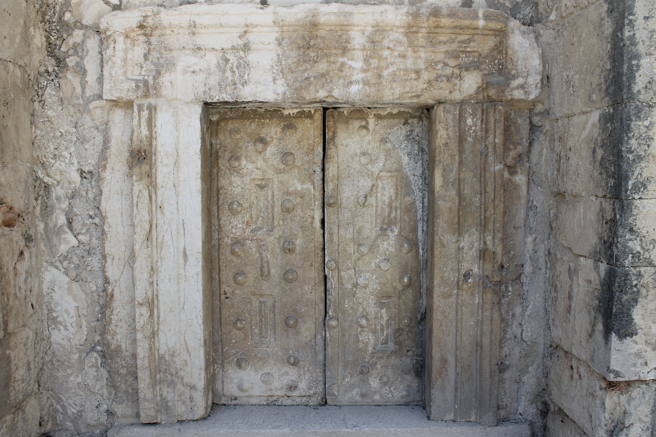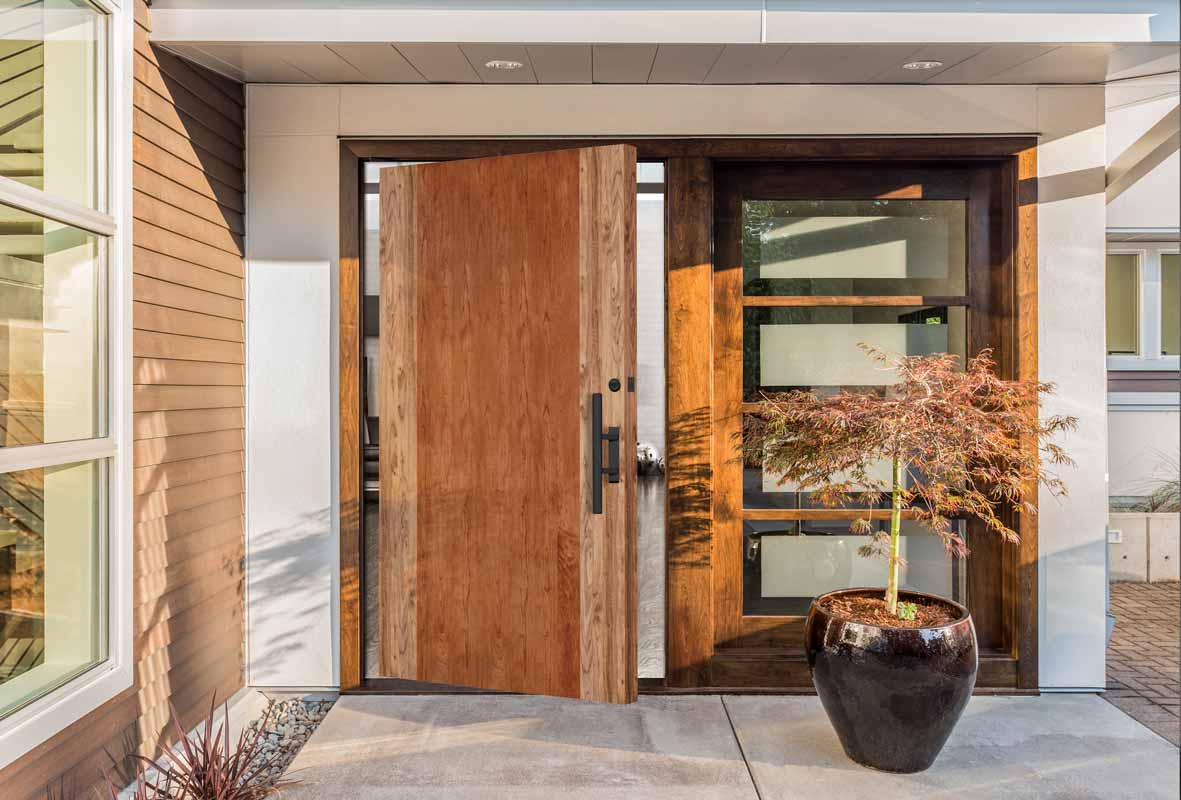Doors have long been more than just architectural necessities. They serve as thresholds, boundaries, and symbols of transition. From the earliest known stone slabs used to seal tombs to today's app-controlled smart entry systems, doors have evolved in both form and function. This article explores the history of doors—their origins, evolution, and where they lie in the future.
Ancient Origins: Protection and Privacy
The earliest known doors date back over 4,000 years. Archaeological evidence from Egyptian tombs shows wooden doors carved from a single slab, designed not only to seal the dead within but also to guard against grave robbers. In Mesopotamia and ancient China, doors served defensive purposes—massive wooden or bronze gates were fitted into city walls to protect urban settlements from invasions.
Even in these early uses, the concept of a door was tied to security, division of space, and control of access—principles that continue to define door design today.

Classical and Medieval Doors
During the Greco-Roman period, door design evolved beyond simple functionality and began to embrace artistry and symbolism. Architectural advancements allowed for more elaborate entrances, with hinges becoming more refined for smoother operation. Materials diversified significantly, with bronze, iron, and high-quality hardwoods becoming common choices. In the homes of wealthy Romans, double doors — known as valvae — were popular, offering both aesthetic appeal and practical use. Some temples even featured primitive automation, where early pulley systems allowed the grand doors to open as part of ceremonial events.
Key features of Greco-Roman doors included:
● Refined hinge technology that improved durability and ease of movement.
● Material diversity, such as bronze for grandeur, iron for strength, and hardwood for warmth.
● Double-door designs (valvae), often seen in villas and public buildings.
● Early automation in temples, using pulleys and counterweights for dramatic openings.
The Medieval period brought a shift in door design, heavily influenced by the need for security and symbolism. With frequent conflicts and the rise of fortified architecture, wooden doors were often reinforced with iron bands or plates to withstand attacks. In religious and political buildings, doors took on monumental proportions, with intricate carvings that conveyed messages of faith, authority, or heritage. Gothic cathedrals, in particular, used their grand entrances as a statement of both spiritual significance and craftsmanship.
Key characteristics of Medieval doors included:
● Fortified construction, with iron bindings and heavy timber for defense.
● Large, imposing entryways in castles, churches, and civic halls.
● Carved imagery depicting biblical stories, heraldic symbols, or moral lessons.
● Symbolic design, where the doorway served as a threshold between the earthly and the sacred.
This progression from the ornate engineering of the Greco-Roman era to the fortified artistry of the Middle Ages shows how doors reflected not only technological capabilities but also the cultural priorities of their time.
The Renaissance to Industrial Age: Craftsmanship and Mass Production
From the Renaissance to the Industrial Age, the evolution of door design reflected changes in both craftsmanship and technology. The Renaissance era emphasized artistry and proportion, while the Industrial Age shifted toward efficiency and accessibility.
| Period | Key Developments | Materials & Features | Cultural Impact |
|---|---|---|---|
| Renaissance | Skilled carpentry and architectural theory placed greater emphasis on doors as both functional and decorative elements. Panel doors with geometric layouts became the standard. | High-quality hardwoods, detailed joinery, symmetrical paneling. | Doors symbolized refinement, proportion, and the humanist ideals of the era. |
| 19th Century Industrial Age | Introduction of mass production allowed factories to produce standardized doors in large quantities. Glass manufacturing advances led to glass-paneled doors. | Standardized wooden panels, machine-cut designs, clear or frosted glass inserts. | Quality doors became affordable for middle-class homes, and glass panels balanced privacy with natural light. |
This transition marked a shift from handcrafted exclusivity to industrial accessibility, blending artistic heritage with technological progress.
The 20th Century: Material Innovation and Modern Design
In the modern era, doors reflected broader design trends—simplicity, function, and clean lines. Materials like aluminum, fiberglass, and engineered wood expanded the possibilities of door performance and affordability. Garage doors, sliding doors, and revolving doors became widely adopted, each solving different spatial and practical problems.
The mid-20th century also introduced automated doors, first seen in commercial spaces like supermarkets and airports. These innovations laid the foundation for the next leap: smart technology.
Today and Beyond: The Rise of Smart Entry Systems
Today, the concept of a door includes keyless entry, biometric access, and Wi-Fi-enabled security features. Residential and commercial properties alike are integrating smart locks, remote monitoring, and energy-efficient door systems. The door is no longer just a static boundary—it is now part of the Internet of Things (IoT), capable of interacting with users and environments in real time.
Furthermore, sustainability is playing a larger role in design and materials. Eco-friendly composites, recycled metal, and thermally efficient construction methods reflect the industry's response to environmental concerns.

From carved stone slabs in ancient temples to intelligent systems controlled by smartphones, the evolution of the door tells a story of human advancement—our desire for safety, privacy, accessibility, and increasingly, integration. As technologies continue to evolve, the humble door will remain a critical interface between the spaces we inhabit and the lives we lead.
For those interested in a deeper understanding of modern door manufacturing and its advantages, Haibo's website provides a valuable resource. The history of doors is a story of continuous improvement, reflecting the evolution of materials, technology, and design. Haibo Door Factory and Haibo uphold this tradition, striving to create products that meet the demands of today's built environment. The evolution from ancient stone doors to modern doors reflects the ongoing pursuit of better architectural solutions.

 English
English русский
русский Français
Français Español
Español bahasa Indonesia
bahasa Indonesia عربى
عربى



